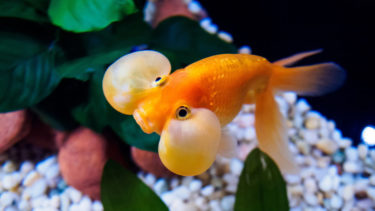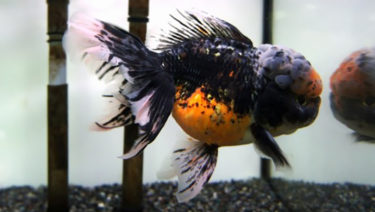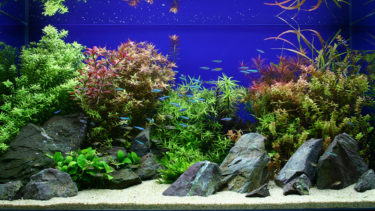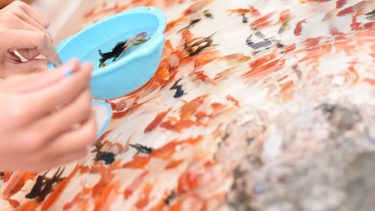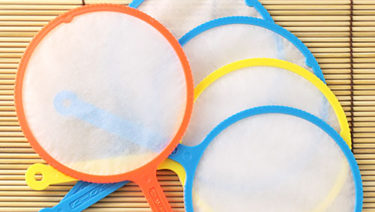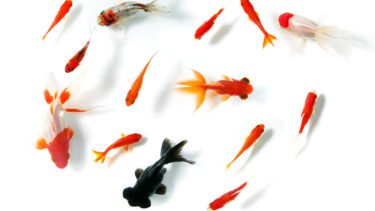Goldfish are often seen in summer, but they were originally imported from China. Let me explain how goldfish from China came to be familiar to the Japanese people.
History
Origin of the name
In China, the pronunciation of "goldfish" is very similar to that of the local word "kinyo," which is considered auspicious and is one of the reasons why it is still widely petted today.There are a few places that place goldfish or ornaments of goldfish on the eaves of their stores in the hope that they will make more money than they can afford.
Many people think that goldfish are the goldfish that you see at fairs and festivals in the summer, and that there are many different kinds of goldfish. And it is no exaggeration to say that each type of goldfish has its own characteristics, and that is the best part about goldfish [...]
When you go to a specialty store to buy goldfish, you may see the place of production written on the label, such as Yatomi or Yamatokoriyama. Even if the place of production is written, it is sometimes difficult to understand what the difference is depending on the place of production. In this article, we will explain the place of production. The raw [...].
History
Goldfish are believed to have originated near Zhejiang Province in the lower reaches of the Yangtze River.Goldfish were bred in the North and South China period, but were not very common at that time.It was bred and loved by emperors and royalty around the time of the Ming Dynasty, but later fell into a crisis of existence when the Cultural Revolution took place in China. Later, when the Japan-China Peace and Friendship Treaty was signed in August 1978 and private Japan-China exchanges expanded, Japanese goldfish producers went to Zhejiang Province and other areas to cooperate with Chinese goldfish producers who were in crisis at that time to overcome the crisis.
The history of goldfish in Japan dates back to the Kamakura period (1185-1333), when the existence of goldfish itself was known, but the goldfish itself was introduced from China in the Muromachi period (1333-1573).It was during the Edo period (1603-1868) that goldfish were generally introduced to the world in Japan. In the Edo period, aquaculture began on a large scale, but at that time, goldfish were still a luxury item. Among them,In the mid-Edo period, goldfish, along with killifish and other fish, became a popular pastime for the general public, and sales methods such as goldfish sales and goldfish scooping were also established.It is said that the love of goldfish spread in the Edo period (1603-1868) because of Yoshiyuki Adachi's "Kingyo Sodategusa," a book on goldfish breeding published in 1748, which created a fever for goldfish breeding. However, since there were no breeding facilities like today, it was impossible to keep goldfish alive for a long time unless you were a samurai, wealthy farmer, or wealthy merchant who had a pond in your house. They also kept them in a tub, pottery, brazier, or other container filled with water.
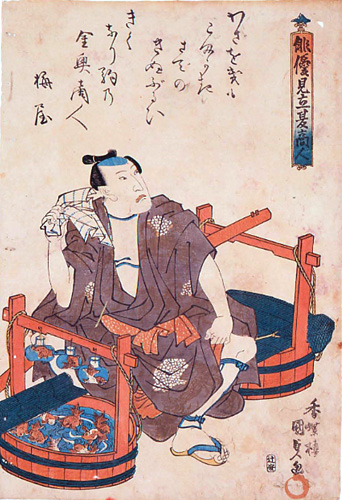
Actor Mitekatsu merchant, goldfish vendor, by Utagawa Kunisada

Goldfish Zukushi: One Hundred Stories by Kuniyoshi Utagawa
appreciation (e.g. of art)
Many people think that goldfish are usually viewed from the side. Nowadays, with the large amount of aquarium glass and other equipment available, I feel that it is more common to see them from the side. However,In the Muromachi period when goldfish first entered Japan and in the mid-Edo period when they became known to many people, glass containers were used to transport goldfish, but there were not many glass containers large enough to keep them. At that time, goldfish were viewed in water lily bowls or tubs.Therefore, in the world of goldfish, the true way to view them is from above, which is the correct way to appreciate them.
*To look from above is called "uwami" (looking up).
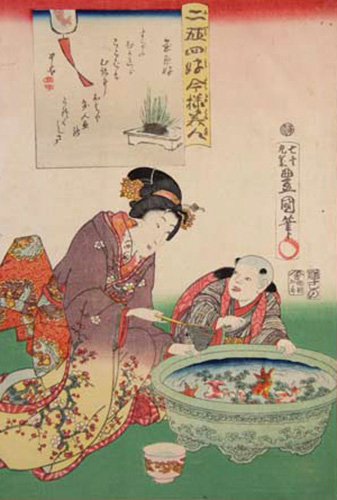
255.4 "Imajo Beauty," goldfish, by Utagawa Toyokuni
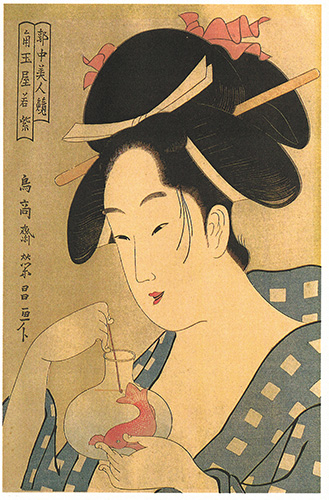
Kakuchu Bijin Kakutamaya Wakamurasaki, by Tori Kosai Eisho


